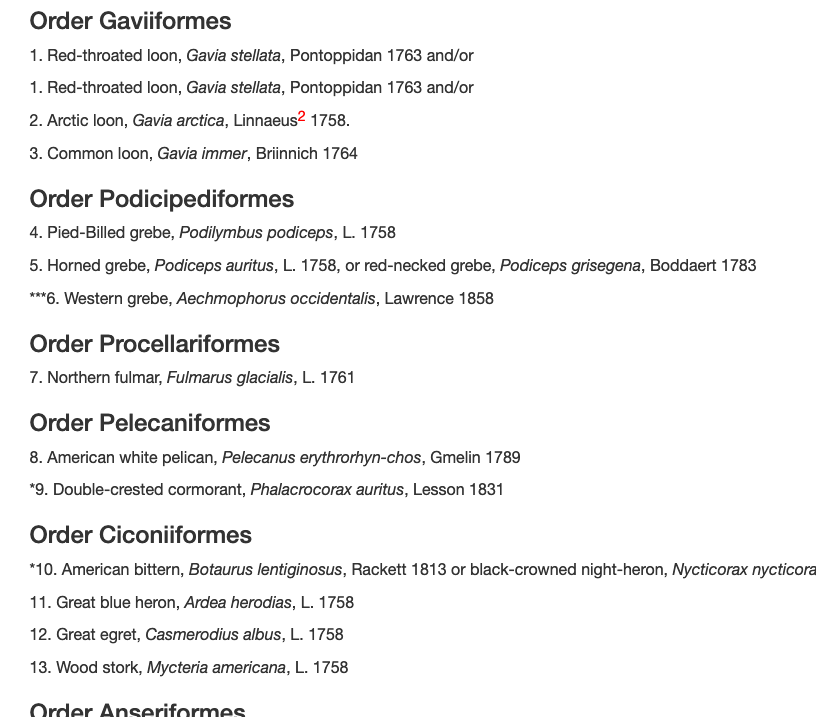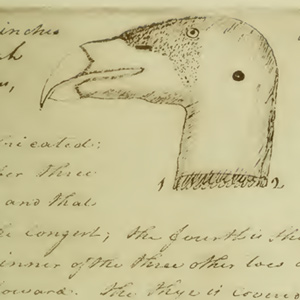Ohio-born, Virginia Holmgren moved to Portland, Oregon, with her husband (a mining engineer with the U.S. Forest Service) in 1956, and in 1960 Virginia began writing articles on birds for The Sunday Oregonian, a series she continued for 22½ years, while doing other writing for books and magazine publications. On her first visit to Fort Clatsop (the 1805—1806 winter establishment of the Lewis and Clark Expedition) she saw birds she had never had the chance to know during her many years of birding east of the Rocky Mountains, and she wondered if Lewis and Clark had mentioned these new species in their journals. She purchased the Lippincott non-annotated edition of the 1814 Biddle-Allen text or paraphrase based on the origin al manuscript journals of the explorers. She was misled by the word “unabridged” on the cover of the Lippincott edition. Using this text she indexed every reference to birds. Later, she discovered the gaps in this supposedly complete text, and checked with the Thwaites edition of the original journals, the 1893 Coues edition, an annotated reprint of the 1814 Biddle-Allen narrative, the works of Paul R. Cutright, Donald Jackson, and Ken Walcheck’s natural history article in Montana Outdoors (July-August 1976).
Since many of the birds in the journals are described but not named—or named with labels no longer in use—she identified them with the same system she developed for identifying birds in the wild. Virginia calls this her SCANS system—with SCANS an acronym for the five clue points: Size, Colors, Actions, Notes, Setting. The use of this system is explained in one of her 32 published books, SCANS Key to Bird Watching, Timber Press, Beaverton, Oregon, 1983.
Although she is no longer writing for The Oregonian, she is a frequent contributor to Bird Watcher’s Digest, which published her briefer article on Lewis and Clark Expedition birds in the September-October 1983 issue. She has also published under her maiden name, Virginia Cunningham. She holds a B.S. degree (and a Phi Beta Kappa key) from Ohio State University, and an M.A. degree from Northwestern. In her home on a wooded Oregon hillside, she continues to watch birds, read, and write. Among her books of special interest to birders and historians is Bird Walk Through The Bible, Seabury Press, 1972.
Contributions


This glossary lists in alphabetical order the bird names used by Lewis and Clark in expedition records. To aid the reader in locating a complete passage in any edition of the journals, or paraphrase based on the original journals, each bird name is followed by the date of usage—usually the first, or a later significant, entry.


In 1758, the great Swedish classifier Carl Linnaeus urged every scientist to give join him in using a universal and simplified system of classification. He had just published a new text re-naming every plant and animal he knew with a two-word Latin label—a binomial.
Summary of Birds Seen
by Virginia C. Holmgren
The birds seen on the expedition are listed by scientific order and numbered for a total of 134 species or well described subspecies. Each is identified by Latin binomial (trinomial for subspecies), surname of original classifier, and year of publication.
Birdwatcher’s Guide to Lewis and Clark
by Virginia C. Holmgren

As you find each one and try to check each identifying clue, you cannot help but know much of the same challenge, the same success—or frustrations—that kept Lewis and Clark birdwatchers to the end.
Experience the Lewis and Clark Trail
The Lewis and Clark Trail Experience—our sister site at lewisandclark.travel—connects the world to people and places on the Lewis and Clark Trail.
Discover More
- The Lewis and Clark Expedition: Day by Day by Gary E. Moulton (University of Nebraska Press, 2018). The story in prose, 14 May 1804–23 September 1806.
- The Lewis and Clark Journals: An American Epic of Discovery (abridged) by Gary E. Moulton (University of Nebraska Press, 2003). Selected journal excerpts, 14 May 1804–23 September 1806.
- The Lewis and Clark Journals. by Gary E. Moulton (University of Nebraska Press, 1983–2001). The complete story in 13 volumes.

